The Pros and Cons of Standing at Work
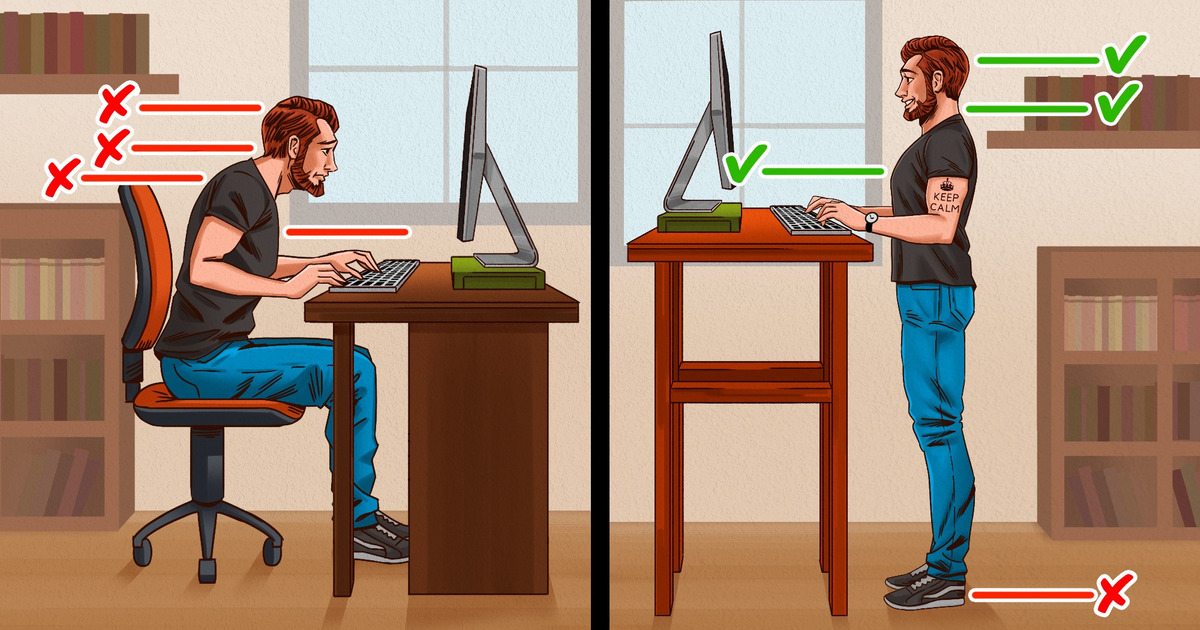
5-Minute Crafts would like to tell you about the pros and cons of standing desks. In the bonus section, you’ll find a guide on how to equip a standing desk at home with things at hand.
The history of standing desks
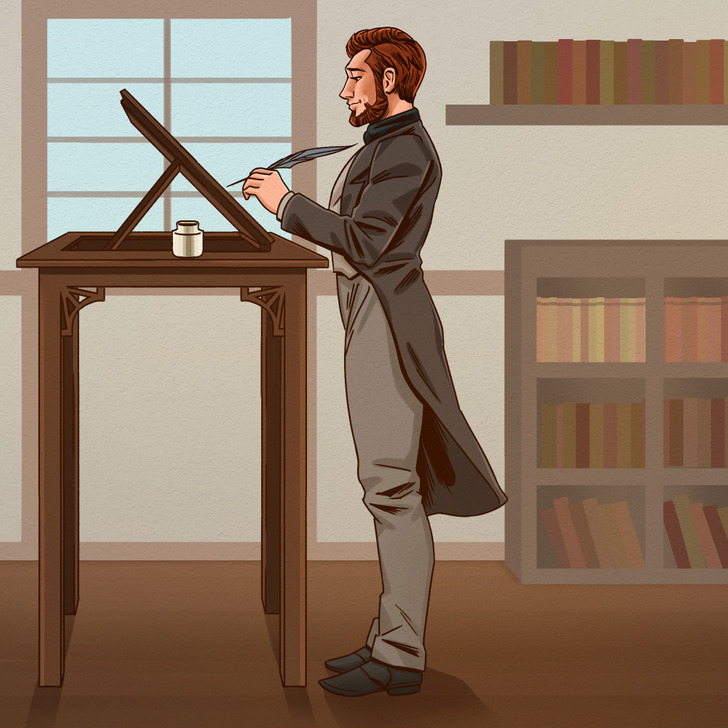
It’s not known who invented the first standing desk, and when. In the eighteenth century, in the age of large maps, books, and voluminous documents, these desks were widely used for easier viewing.
Some schools used standing desks instead of regular ones in classrooms. They were often used in wealthy homes and offices in the eighteenth and nineteenth centuries. This desk was a favorite workstation for many famous people.
The pros of standing at work
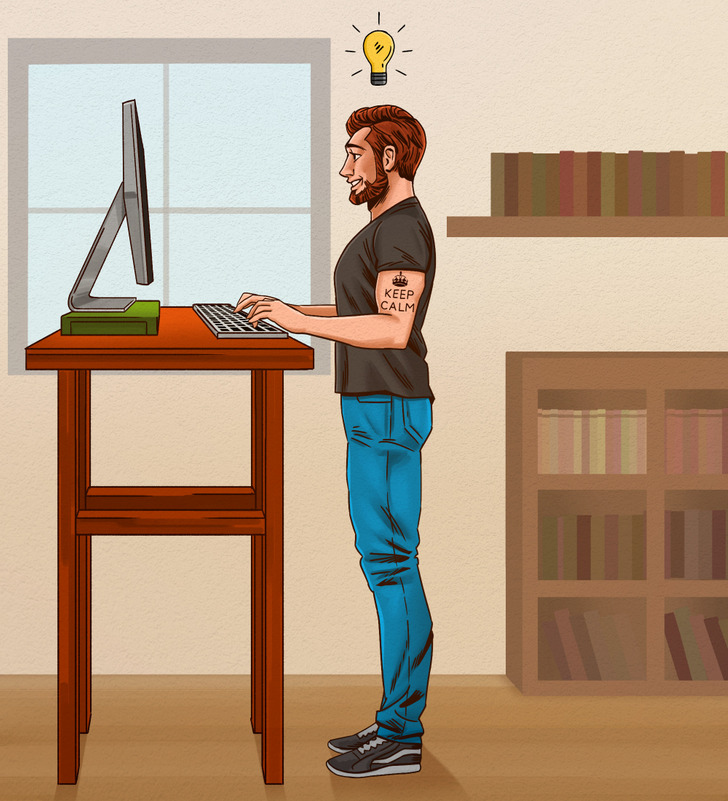
- You burn more calories. Standing while working can’t be compared with working out in the gym in its efficiency. However, a study showed that during just one afternoon of standing while working you burn 174 calories more compared to sitting.
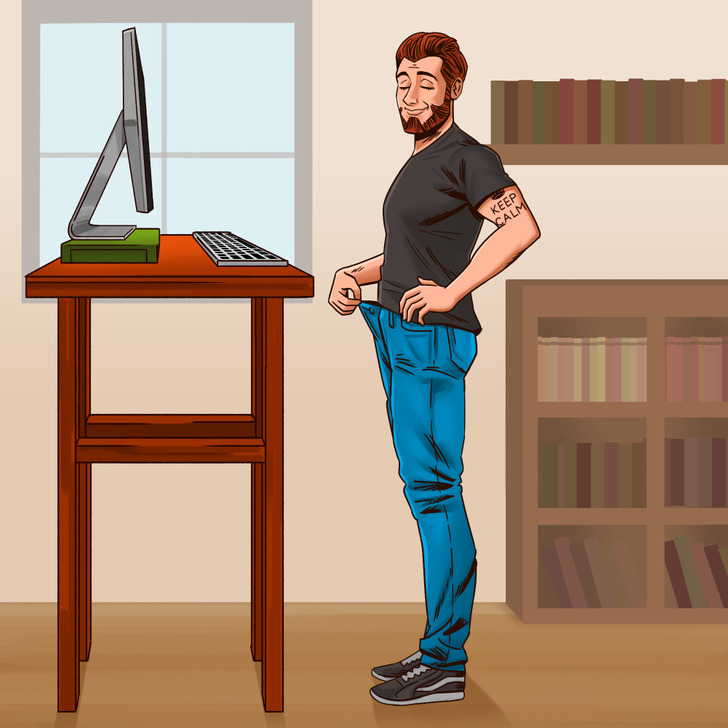
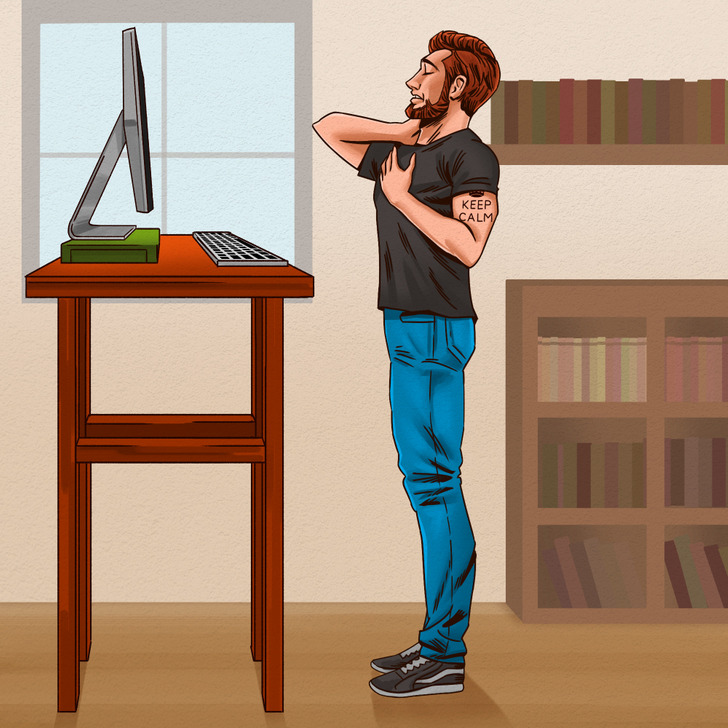
- Your energy and concentration levels improve. Even temporary switching from sitting to standing work raises the level of concentration. Prolonged sitting can lead to lethargy and inertia. Comfortable standing furniture will let you quickly get down to business with more energy.
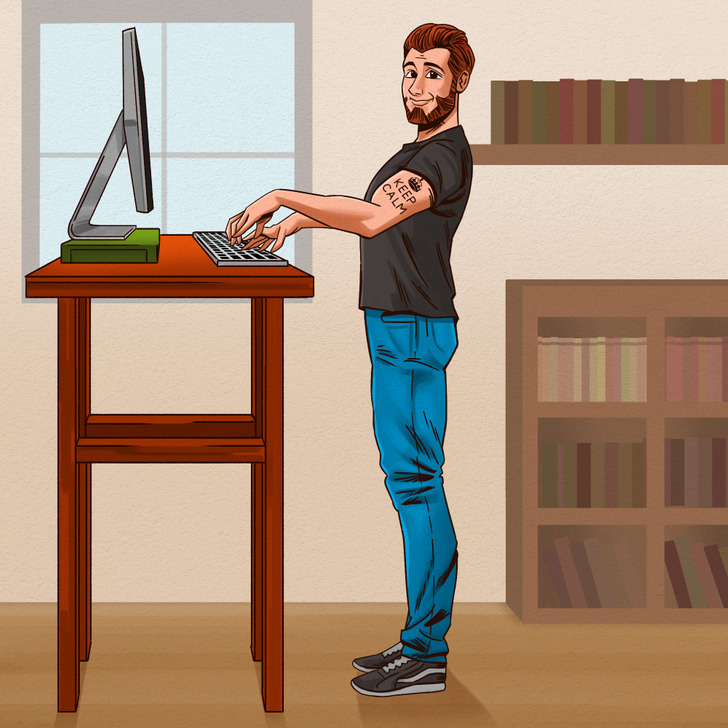
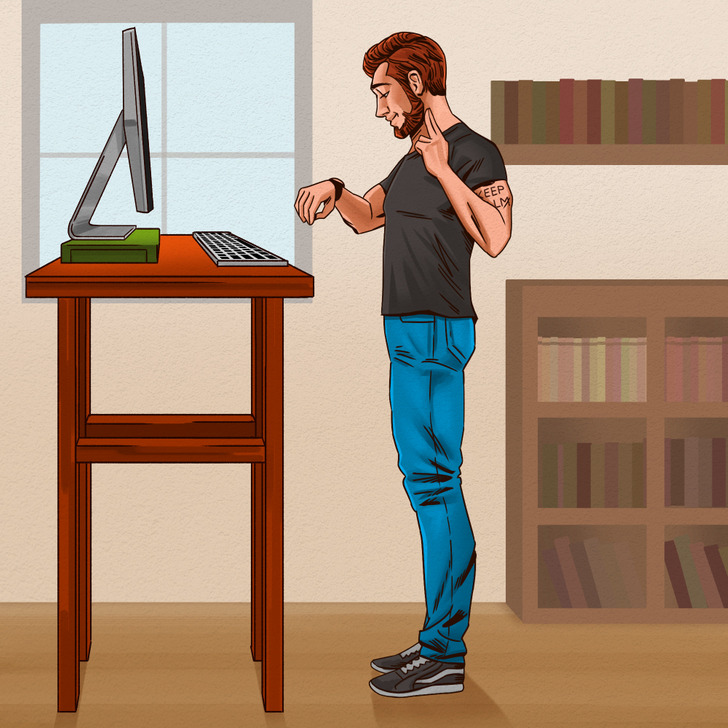
The cons of standing while working
- Tired legs and swelling may take place. Standing work lasting for several hours can provoke discomfort — due to swelling, it may seem that your shoes have become too small. If you stand still for a long time, the muscles of the legs will not contract, and as a result, the inflow and outflow of blood to and from the legs will slow down.
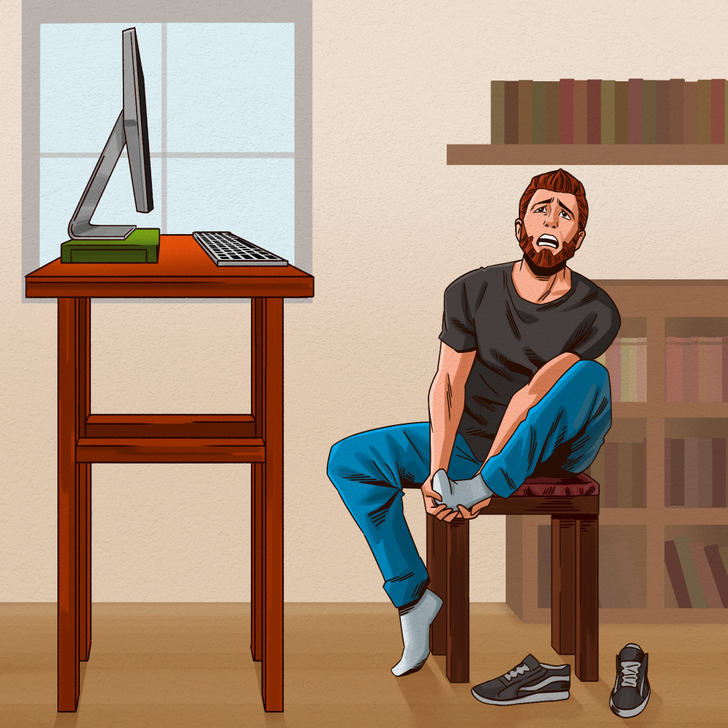
- You have a limited choice of footwear. Working all day long in high-heeled shoes will be a problem. For standing work, you need to carefully choose comfortable, high-quality shoes in which you can sit and stand equally comfortably for a long time.
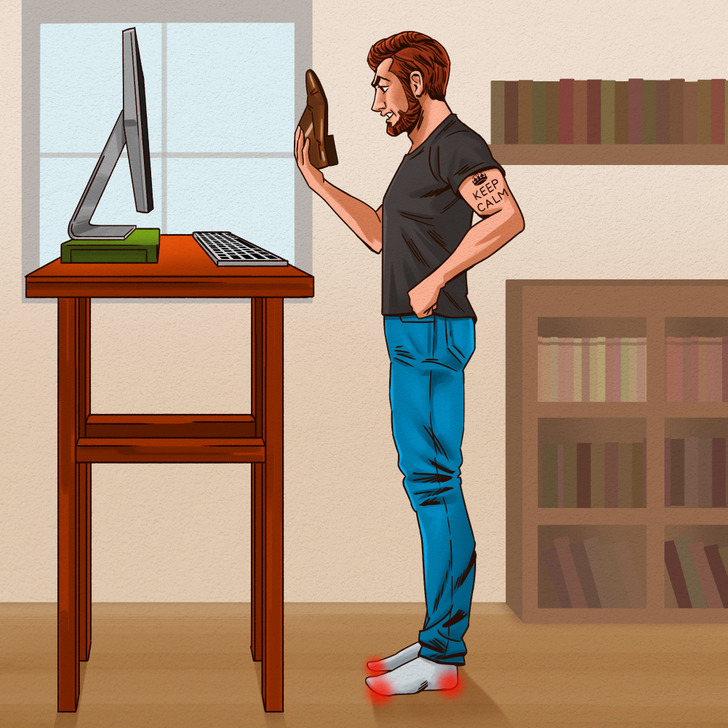
- Standing can be uncomfortable for specific tasks. You may find it difficult viewing printed materials, using your phone, or multitasking. It may also be difficult for you to work with a keyboard and mouse in the new position, and the height of your monitor will not be comfortable.
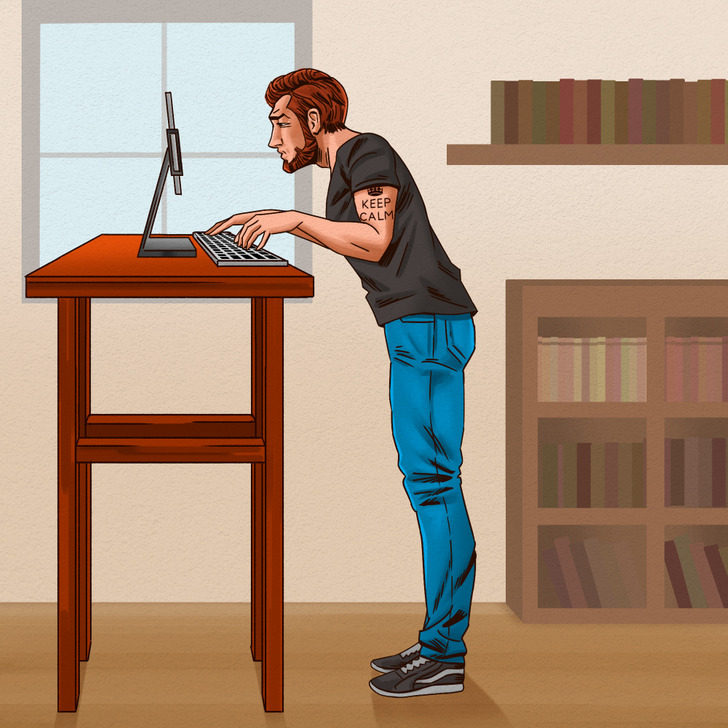
- Standing is not a substitute for sports. Don’t forget about physical activity. Standing work only helps you burn some calories. However, you don’t have to go to the gym right away, you can start with just walking.
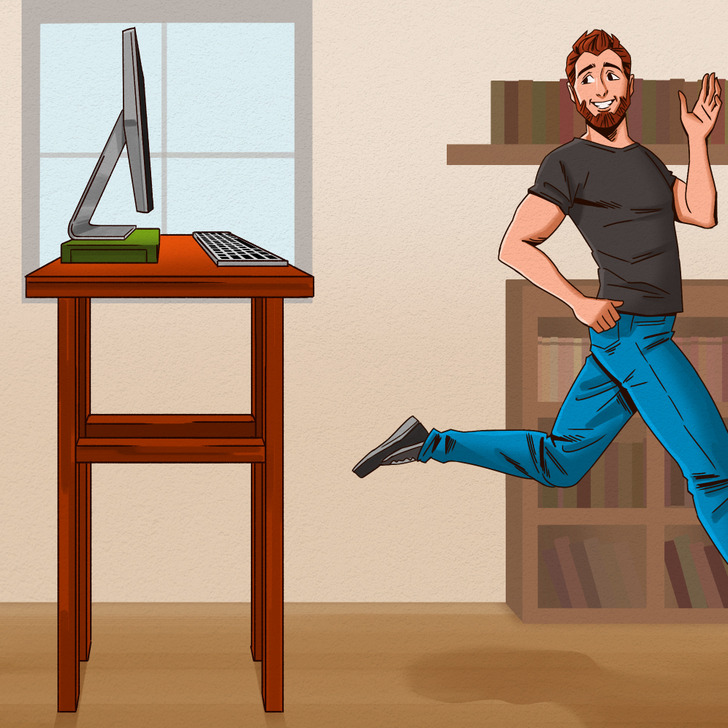
Bonus: how to check whether it’s comfortable for you to work at a standing desk
You can easily make a standing desk at home or in the office with interior elements you have at hand.
There are a few ways to do it for you to see if you are ready for standing work. However, keep ergonomics in mind: the height of the working surface should be just under the bend in your elbows.
The simplest solutions are:
- Place a side table on top of your desk — you can put a small shelf there for the keyboard.
- Make your desk taller by placing any stable items under the desk legs.
- Use a dresser. It may be not the most ideal workplace, but it can work quite well depending on the dresser’s height in relation to your height.